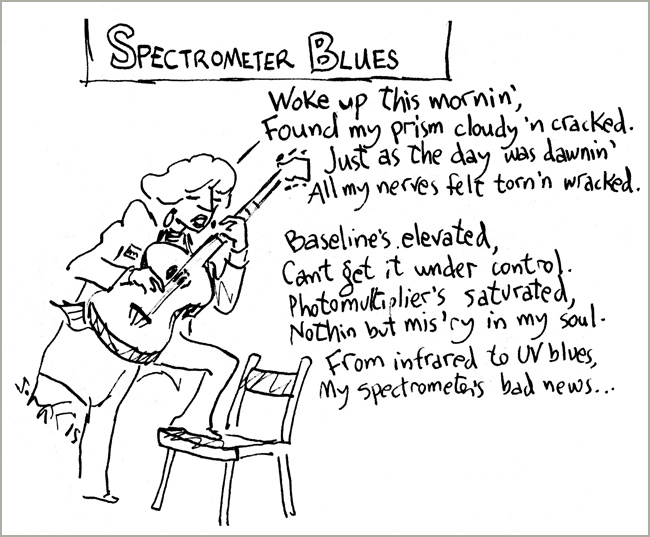
This Article From Issue
March-April 2019
Volume 107, Number 2
Page 122
EUREKA! DETAILS TO FOLLOW: Cartoons on Chemistry. Sidney Harris. 162 pp. Science Cartoons Plus Publishing, 2018. $14.95.
Since their first appearance in the pages of American Scientist in 1970, the science cartoons of Sidney Harris have remained a stalwart favorite among readers. Although Harris has put together a few dozen collections of his works, his latest is the only one to focus exclusively on chemistry. In a 1986 issue of American Scientist honoring Sigma Xi’s centennial, Harris wrote about his creative process, emphasizing that he never wants to appear more in favor of any one area of science. Indeed, even this new collection has enough overlapping themes with all areas of science to make the jokes enjoyable for chemists and nonchemists alike.

© Sidney Harris
Harris said in his 1986 column that his inspiration often comes from items in the news; he combines a hot subject with images that are perhaps a bit cliché but are immediately recognizable as representative of the subject he is trying to convey. But, as Harris explained, there’s also an element of serendipity: “A few times a year I am completely surprised by an idea that occurs to me, and I wonder how it came about. The component parts are all there, very visible, and in retrospect it often appears that it must have been the simplest, most obvious, and most logical thing in the world to put that cartoon together.”

© Sidney Harris
This current collection of 152 cartoons, some of which are published for the first time, explores topics such as reactions that lack showmanship, thankless groundwork, the divisions between disciplines, and the ever-frustrating task of calibrating equipment. Other cartoons lament the irony of working one’s entire life to receive a Nobel Prize for research conducted early in one’s career, why scientists don’t have fantasy research leagues, what causes researchers to get pushed into sales or management, and the frustrations of regulatory approvals and fundraising, to name just a few.

© Sidney Harris
Whatever Harris’s formula for a successful cartoon that elicits a smirk and an appreciation for its cleverness, it seems to work and to stand the test of time.

© Sidney Harris
American Scientist Comments and Discussion
To discuss our articles or comment on them, please share them and tag American Scientist on social media platforms. Here are links to our profiles on Twitter, Facebook, and LinkedIn.
If we re-share your post, we will moderate comments/discussion following our comments policy.